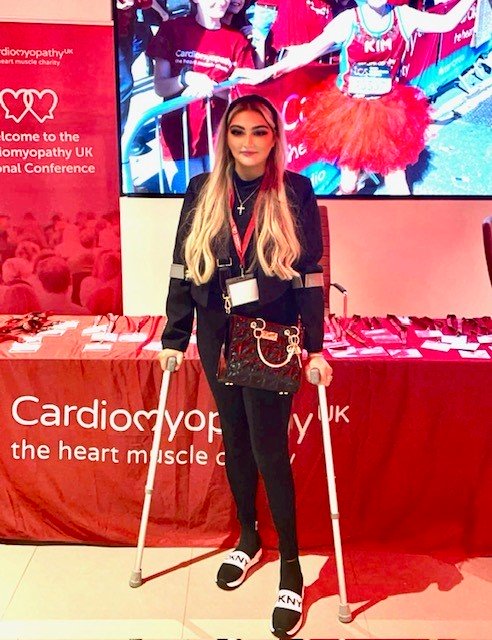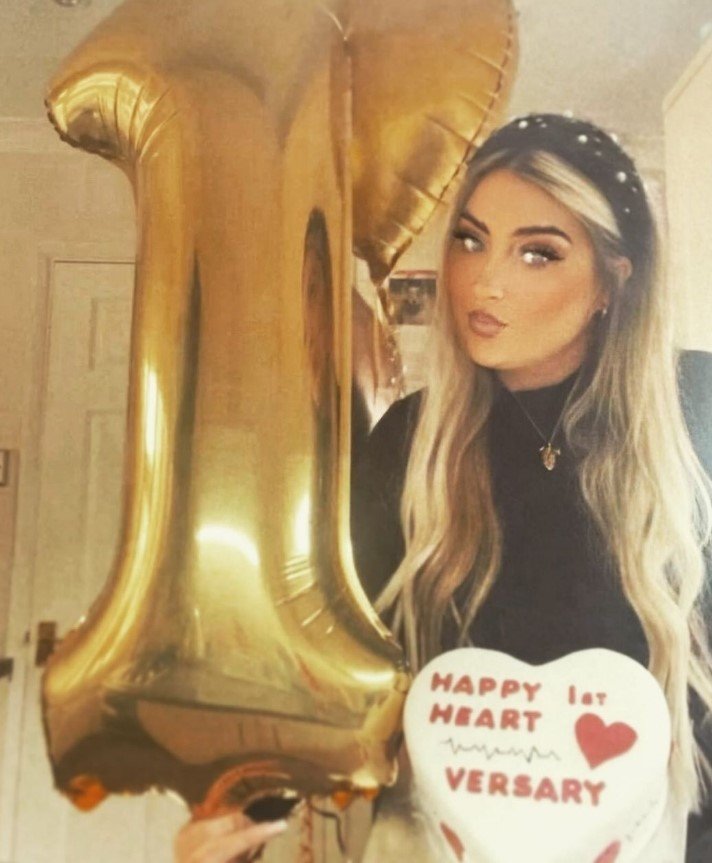Charlie was diagnosed with dilated cardiomyopathy (DCM) when she was 16 years old. Charlie has shared her cardiomyopathy journey with us to help others going through a similar experience.
The Diagnosis
My family has a long history with cardiomyopathy. My dad passed away when I was two because of a heart transplant rejection after being diagnosed with dilated cardiomyopathy (DCM). Two of my aunts were tested for cardiomyopathy as their elder sister was already diagnosed and awaiting a heart transplant due to heart failure.

I was only two when my dad died, so the only impression I had of cardiomyopathy was from pictures of him in a wheelchair or at the hospital. My mental image of my dad having cardiomyopathy didn’t immediately match my experience, but I soon found out that you can look absolutely fine on the outside but still be seriously ill – there’s no one way to look when you have cardiomyopathy.
My symptoms began around the age of 16. I started gaining weight for no reason and had a lot of fluid build-up around my stomach, ankles, and legs, which meant I couldn’t walk. I was also constantly ill with brain fog, nausea, breathlessness, and arrhythmias. I began the process of getting tested in 2010; it took a year and multiple trips to Great Ormond Street Hospital for my condition to be identified as dilated cardiomyopathy. I had to do multiple exercise tests, an MRI scan, echocardiogram (echo) and electrocardiogram (ECG), plus 24 hour and week ECG monitoring.
When I was first diagnosed, I was frustrated since I didn’t feel unwell at the time and just wanted to feel like a normal teenager. I didn’t really understand what was wrong with me or what was going to happen, and feeling out of control made me anxious.
Living with Cardiomyopathy
Having a heart condition didn’t impact my life a lot at first, but that changed between the ages of 18 and 27, when my symptoms began to worsen. I noticed my energy levels dropping, which meant I wasn’t able to spend as much time with friends or family if I needed to rest. It made me feel really down and isolated, which meant I felt even more fatigued. I found romantic relationships especially difficult as I couldn’t commit to them as much as someone without cardiomyopathy could, so I felt like I was letting the relationship down. I became very angry with the world and people who didn’t take me seriously because I didn’t 'look’ sick. One good week would result in two bad weeks, so I had to be very careful with how I used what little energy I had.
I needed to take a lot of time off work because my health was really unpredictable. I ended up having two different surgeries, and a long-stay hospital admission which led to my heart transplant. From the age of 16, I have had regular hospital appointments every six months, but this soon became every one to two months for check-ups. When I was 21, I had my subcutaneous implantable cardioverter defibrillator (S-ICD) placed. At 27, when I was diagnosed with heart failure, I had the S-ICD replaced with a device that had a pacing function. When I went into heart failure, I had a very low heart function, I was constantly in and out of hospital for fluid build ups, heart attack symptoms and stroke symptoms.

The effect my cardiomyopathy had on my emotional wellbeing was huge. I started refusing tests and having panic attacks over the loss of control I felt. I developed a fear of needles as well as PTSD and depression for which I’m now being treated. I want to use my experiences to help other young people know that they’re not alone, and that Cardiomyopathy UK has many information resources and groups to advocate for them and give them a sense of belonging.
It’s been over a year since I received my heart, and I couldn’t be more thankful for all the hospitals and medical professionals who helped me get to this point. Right now, I’m still recovering from my heart transplant and fasciotomy so I can’t work. I was at college training to be a hairdresser when I was first diagnosed. The manager and staff at my salon have been so supportive from the beginning of my journey right up until today, making sure they could accommodate me and adjust things so that I can still work. Last year I was invited to the Cardiomyopathy UK conference in London as a guest speaker. I can’t wait to be able to give back even more and help out as much as I can.
If you're a young person living with cardiomyopathy, we have a range of support and information we can offer.